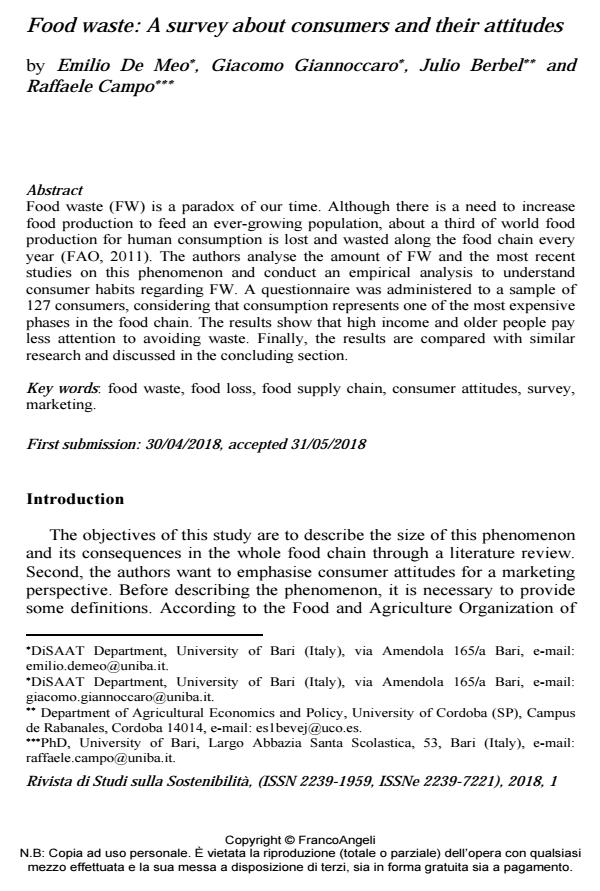Food waste: A survey about consumers and their attitudes
Titolo Rivista RIVISTA DI STUDI SULLA SOSTENIBILITA'
Autori/Curatori Emilio De Meo, Giacomo Giannoccaro, Julio Berbel, Raffaele Campo
Anno di pubblicazione 2018 Fascicolo 2018/1
Lingua Inglese Numero pagine 14 P. 181-194 Dimensione file 226 KB
DOI 10.3280/RISS2018-001013
Il DOI è il codice a barre della proprietà intellettuale: per saperne di più
clicca qui
Qui sotto puoi vedere in anteprima la prima pagina di questo articolo.
Se questo articolo ti interessa, lo puoi acquistare (e scaricare in formato pdf) seguendo le facili indicazioni per acquistare il download credit. Acquista Download Credits per scaricare questo Articolo in formato PDF

FrancoAngeli è membro della Publishers International Linking Association, Inc (PILA)associazione indipendente e non profit per facilitare (attraverso i servizi tecnologici implementati da CrossRef.org) l’accesso degli studiosi ai contenuti digitali nelle pubblicazioni professionali e scientifiche
Food waste (FW) is a paradox of our time. Although there is a need to increase food production to feed an ever-growing population, about a third of world food production for human consumption is lost and wasted along the food chain every year (FAO, 2011). The authors analyse the amount of FW and the most recent studies on this phenomenon and conduct an empirical analysis to understand consumer habits regarding FW. A questionnaire was administered to a sample of 127 consumers, considering that consumption represents one of the most expensive phases in the food chain. The results show that high income and older people pay less attention to avoiding waste. Finally, the results are compared with similar research and discussed in the concluding section.
Parole chiave:Food waste, food loss, food supply chain, consumer attitudes, survey, marketing.
- Teenagers’ Intention on Sustainable Development- A Food Delivery App – Based Analysis Purvi Mathur, Vidhu K. Mathur, in SDMIMD Journal of Management /2023 pp.79
DOI: 10.18311/sdmimd/2023/32470
Emilio De Meo, Giacomo Giannoccaro, Julio Berbel, Raffaele Campo, Food waste: A survey about consumers and their attitudes in "RIVISTA DI STUDI SULLA SOSTENIBILITA'" 1/2018, pp 181-194, DOI: 10.3280/RISS2018-001013